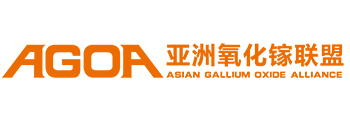

【Epitaxy Papers】Realizing freestanding single-crystal oriented membranes of ultrawide-bandgap semiconductor ε-Ga₂O₃ and their prospects in optoelectronic device applications
日期:2025-04-03阅读:489
Researchers from the Beijing University of Posts and Telecommunications have published a dissertation titled "Realizing freestanding single-crystal oriented membranes of ultrawide-bandgap semiconductor ε-Ga2O3 and their prospects in optoelectronic device applications" in Applied Physics Letters.
Abstract
As an ultrawide bandgap semiconducting material, Ga2O3 has attracted significant attention in providing a foundation for applications in optoelectronic and power devices. The structural incompatibility and/or lattice mismatch of the substrate poses a challenge in preparing vertical devices using Ga2O3. Additionally, the challenges Ga2O3 faces in its epitaxy on a silicon substrate further hinder its integration with other silicon-based advanced electronics. This study demonstrated the use of Sr3Al2O6 as a sacrificial layer to realize single-crystal freestanding ε-Ga2O3 membranes with physical and performance characteristics comparable to those grown epitaxially on rigid substrates. Importantly, these membranes retained integrity after transfer. Observation of sharp diffraction peaks of ε-Ga2O3 (00 l) orientation in x-ray diffraction indicates excellent single-crystalline characteristics and crystalline quality of ε-Ga2O3. High-resolution transmission electron microscopy revealed clear lattice structures belonging to the hexagonal crystal structure of ε-Ga2O3. The dark current of the photodetector made from freestanding ε-Ga2O3 reaches 10−12 A at 5 V, while the photocurrent under 100 μW/cm2 of 254 nm light illumination reaches 10−9 A, with a responsivity of 81.16 mA/W, a detectivity of 2.36 × 1012 Jones, and an external quantum efficiency of 39.67%. Its performance can be compared to or even better than photodetectors made using ε-Ga2O3 directly grown rigid substrates. These results demonstrate that this approach overcomes challenges in fabricating ε-Ga2O3-based vertical devices and their integration with silicon, laying the groundwork for diverse applications with the next generation of semiconductors.
DOI:
https://doi.org/10.1063/5.0255130


